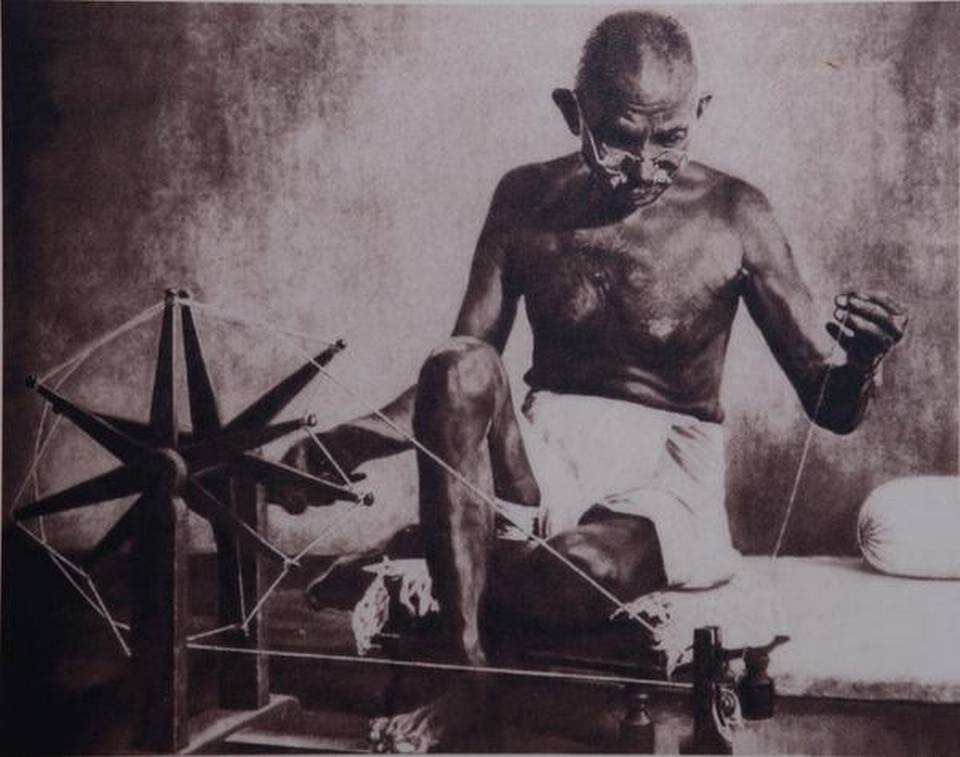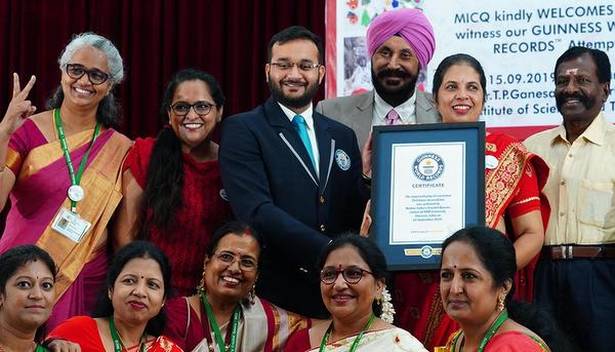03
02
01
Agnihotris across the country gather in Chennai
The Sammelanam was part of the Chatur Masya Sankalpa activities of Kanchi Kamakoti Pitam
Occupying the top place among the plethora of rituals practised by a grihasta is Agnihotram — worshipping fire through the performance of a yagam. Fire is the source of energy and the fountain head of life. “The Vedas give it a noble place enjoining upon a grihasta to do it daily,” says Balakrishna Rangarajan, who has been coordinating the Agnihotris Sammelanam of Kanchi Kamakoti Pitam for 14 years.
“It was in 2005 that Sri Jayendra Saraswati told me: ‘We should organise a meeting of all the agnihotris in the country.’ Taken aback, I said that I didn’t know where they all were. ‘I do,’ he responded and gave me a list. The first All India Agnihotris Sammelanam happened that way and we have not looked back,” recalls Balakrishnan.
In a country of 130 crore population, there are only 130 Agnihotris and only 40 of them are Nitya-agnihotris — performing the yagnam on a daily basis. The latter perform the task of keeping the fire alive 24/7. How is that done? “They take care of the fire like they would a baby,” says Balakrishnan.
An Agnihotri has to master the Vedas and engage them through thought, word and deed — recalling the mantras, chanting them and perform the Agnihotram. The Rig, Yajur and Sama Vedas blend to please the devathas — Rig through the visualisation of the mantras, Yajur by giving it a form and Sama through its mesmerisingly musical chanting.
The yaga is not done for the performer’s welfare. That comes last. The Agnihotri prays to the fire to fill the earth with ample water, which in turn will provide grass, which in turn will feed the cows’ whose milk and ghee nourish the world and are essential for the sacred fire. It is ultimately for human welfare, they pray.
The wife is given an exalted position in this ritual. “Without her there is no yagnam,” states Balakrishnan. She has to chant mantras too and the two observe the discipline prescribed. Incidentally, Agnihotris at the Sammelanam this year discussed the subject: ‘What happens when the lady is unable to participate?’ The proceedings take place in Sanskrit.
Ultimate sacrifice
“The fire preserved by the Agnihotri is so sacred that it goes with him in his last journey. Sastras prescribe that the day after his funeral, his bones should be collected, powdered and a yagna done with ghee. He is thus given back to Agni, completely. Can there be a better sacrifice than this,” asks Balakrishnan. “There were 98 Agnihotris when the Sammelanam was started. Now there are 130. But for the perseverance and patience of the successive pontiffs of the Kanchi Math, this would not be possible,” he stresses. “These are giants, but are eager to congregate and share their knowledge under the benign leadership of the Kanchi Sankaracharya,” he adds.
If they are all pundits, where is the need for debate? And it is a Science, where every step has been clearly defined. “True. But there are differences, depending on the region to which they belong, the sect and the rishi parampara,” says Balakrishnan. The core is the same but there will be variations in the execution. The Sammelanam gives them an opportunity to raise doubts and clarifications. Each will adhere to his own tradition but gain knowledge about other systems,” he explains.
Scattered in different parts of the country, the Agnihotris had come for the Sammelanam from Jodhpur, Mumbai, Satara, regions of the Godavari and Krishna, Kerala and Tamil Nadu. “That was how Sri Chandrasekharendra Saraswati Swamigal preferred it to be. He wanted the smoke from the Agnihotri’s havan to purify the air in all parts of the sky,” observes Balakrishnan. The Agnihotris, who participated in the Sammelanam on September 7-9 were honoured by the Sankaracharya with a purse and gifts of gold and silver.
Compiled by Geetha Venkataramanan
source: http://www.thehindu.com / The Hindu / Home> Society> History & Culture / by Geetha Venkataraman / September 12th, 2019
How the Tamils celebrated the Mahatma
An endless list of artistes — music, stage and cinema — adored him
It was January 31, 1948. “Mahatma Gandhi Amar Rahe” — the chorus of multitudes was heard all over India. Suddenly there was stillness in the air and pin drop silence. “Hari tum haro jan ki peer…” wafted in the melodious voice of M.S. Subbulakshmi. Millions heard the song with tears in their eyes. Gandhiji wanted this song to be sung by MS for his birthday in 1947 at his prayer meeting. MS was indisposed. Rajaji arranged for a recording and sent it to the Mahatma.
Mahatma Gandhi’s Tamil Nadu connection is well known. The young lady from South Africa, Valliammal, had joined his satyagraha movement and continued to follow him for decades. Gandhiji had leant Tamil and signed in Tamil. It was his visit to Madurai that led to a transformation of his dress code and it was Rajaji, who was the conscience-keeper of Mahatma Gandhi.
The freedom movement caught the attention of the Tamil theatre and music world. One of the early pioneers of the Tamil stage, Viswanatha Dass, had met Mahatma Gandhi in 1911 and got converted to Gandhian values, which he wove into his stage plays. The famous song, ‘Khadhar kodi kappal thondruthe…’ reverberated all over Tamil Nadu. He took to khadi and Lord Muruga was dressed in khadi on the stage. Police were ready to arrest him. He was arrested 29 times and bailed out by VOC and Muthuramalinga Thevar.
Gandhiji was in Coimbatore. The Madurai Devi Bala Vinoda Sangeetha Sabha of Nawab Rajamanickam was staging ‘Nandanar’. Gandhiji was invited for the show. He watched the entire show and complimented the Nawab for the bold social theme. He lauded the role of each member of the troupe. A charkha was presented to them. The Nawab considered it a blessing.
S.G. Kittappa and K.B. Sundarambal were big crowd pullers. S.Satyamurthy was instrumental in introducing the couple to the freedom movement. It was at Gandhiji’s persuasion that KBS chose to come back to the stage after the demise of Kittappa. She was always dressed in white khadi. She had recorded songs on Motilal Nehru, Kasturba, Bhagat Singh and Gandhi’s visit to the Round Table Conference. ‘Engal Gandhi London sendrar, aazhntha yochanaigal seithaar’ was a famous song.
When Gandhi was travelling from Karur to Erode, the car broke down at Kodumudi. Sathyamurthy took the Mahatma to Sundarambal’s house. Her joy knew no bounds. She arranged a feast and served the Mahatma on a golden plate. Gandhiji took the plate as a donation to the freedom movement and auctioned the same.
Semmangudi joined the freedom fighters in the salt march to Vedaranyam singing Bharati’s fiery poem, ‘Endru thaniyum intha sudhanthira dhaagam…’ Ariyakudi rendered ‘Raattiname Gandhi kai banam…’ embellishing each phrase with swara swirls in hurricane speed.
D.K.Pattammal was an ardent Gandhian. Her ‘Shanthi nilava vendum…’ carried the message of peace and brotherhood.
An Avatar
Gandhiji’s assassination shook the Tamil art and music world. Madurai Mani Iyer, the khadi-clad super star, took the help of Chitti Sundar Rajan to sing an elegy depicting Gandhiji as an avatar of Krishna, who had come down to destroy evil and resurrect dharma. The Pallavi with elaborate swara prasthara was set to Shanmukhapriya ragam and the various ideals were integrated in the charanam. M.K. Thyagaraja Bhagavathar sang ‘Gandhiyai pol oru santha swaroopanai kanbadhum elidhama…’ in his golden voice. MKT compared Gandhiji to the Buddha and Jesus.
The most soulful music of the era came from Kalki and M.S.Subbulakshmi. ‘Maanilathai vaazhavaikka vantha Mahatma’ was movingly rendered by M.S.
‘Manithar kulam uyindhidavae vantha Mahatma,
Deenargalin thanthaiyana Gandhi Mahatma,
Theeyavarkkum nanmai ennum deiva Mahatma…’
The song goes on to question whether the Devas and the Devis received the Mahatma with flowers as he ascended Heaven. Was he welcomed by Prahlada with tears shed on the Mahatma’s feet?
Did Gnanamuni Dadhichi bless the Mahatma? Was there a smile on the face of the Buddha as Gandhiji entered Heaven? Did Kasturba receive him with folded hands?
The next song of Kalki was even more poignant:
‘Ithanai naal aana pinnum ezhai nenjae yen thuyaram? Ethanai naal azhuthalum, Uthamar than varuvaaro?’ Will all your grieving bring back the Mahatma? You can find him in true love and grace, in the sorrows of the afflicted, in the innocent smiles of the children, in the chantings of the pious, in the bunch of flowers, in the hearts of those who give comfort to the down trodden and the slogging of the workers and peasants.
Kavimani Desika Vinayakam Pillai, Namakkal Kavignar and Suddhananda Bharathi added spark to the freedom movement with their electrifying poems — ‘Kathi indri, Ratham indri varugudhu por.’
The Tamil film world took to Gandhi with gay abandon. Nam Iruvar showed Kamala dancing to the tune
Mahaan… Gandhi Mahaan…
kai rattaiyae aayutham,
khadar adaiyae sobitham…
Gandhi Mangalam
Subramanya Bharati wrote that visionary stanza in 1920 — ‘Vazhga Nee Emman…’ — rendered with feeling by Madurai Mani Iyer. Ariyakudi Ramanuja Iyengar concluded his concerts with a Mangalam saluting the Father of the Nation:
‘Mohandasanukku Jaya Mangalam
Mahatma Gandhikku Subha Mangalam’
source: http://www.thehindu.com / The Hindu / Home> Society> History & Culture> Gandhi Jayanti / by T.C. A. Ramanujam / September 26th, 2019
These women won the Guinness World Record for the world’s largest display of crocheted Christmas decorations
Members of Mother India’s Crochet Queens, consisting of over 6000 members in 13 countries discuss their latest Guinness World Record
Colourful snowmen, Santa Claus bobbleheads and shimmering snowflakes, each carefully woven with yarn, were quickly arranged in a row as a group of women waited in anticipation next to their creations. They were among 350 women of Mother India’s Crochet Queens (MICQ) who showcased a whopping 66,158 decorations, in an attempt to set their fourth Guinness World Record for the World’s Largest Display of Crochet Christmas Decorations. Four hours of careful counting later, the new record was set.
Mother India’s Crochet Queens (MICQ) was founded in 2016 by Subashri Natarajan and currently consists of over 6,000 members in 13 countries. Previously setting records for the largest crochet blanket, largest crocheted scarf and largest display of crochet sculptures, the group, which also consists of cancer survivors, stroke patients and physically challenged members, was trying to break the previous record of 4,416 crochet Christmas decorations achieved by British group Women’s Weekly.
Subashri set the ball rolling in February, and coordinated through 28 goodwill ambassadors across nine countries. “We picked 120 designs and sent it to the organisation for approval. Fixing a target of 100 crochet pieces per participant, I initially aimed towards creating 10,000 designs, not anticipating that we would produce six times the number.”
Participants, from the age of six to 89, busied themselves knitting angels and Christmas trees onto sheets of netlon, while exploring colours and patterns. Applique, a two-dimensional needlework technique combined with amigurumi, the Japanese art of crocheting, resulted in funky gingerbread men and tiny reindeer. Pushing the boundaries of crochet, the women also decided to narrate the history of Christianity through 33 different scenes, beginning with angels appearing before the shepherds. A colour scheme was decided and through CAL (Crochet Along), dolls were couriered in and assembled. With 55 participants from Chennai, and designs sourced from cities like Madurai and Coimbatore, Tamil Nadu contributed the maximum number of pieces, with Karnataka coming in second.
When asked what the pieces would be used for, the members spoke about using their skills for charity and social work. Biji Rajan, goodwill ambassador for Tamil Nadu, mentioned, “Having worked with the Tamil Nadu Police Department in the past, the group has distributed scarves to the blind, and toys to Government school students. We knitted cotton and silk caps for cancer patients at St Jude India, Mumbai.” For their Jawan Project, 3,600 crocheted cowls and caps were distributed to the Army in 2018, and they are currently working on 18,000 scarves for soldiers.
So what will the group’s next record attempt be? Subashini said, “We are now working towards converting the Christmas designs into blankets, cushion covers, mobile cases and sling bags. These will be distributed to approved orphanages, churches and NGOs.”
source: http://www.thehindu.com / The Hindu / Home> Entertainment> Art / by Aditi Subramanian / September 26th, 2019
AC Tech to celebrate its platinum jubilee
The college will honour ‘distinguished alumni’ with awards
Alagappa College of Technology (AC Tech), established in 1944, is planning grand celebrations in December to mark its platinum jubilee year.
A Platinum Jubilee Celebrations Committee headed by N. Srinivasan of India Cements, with P.R. Venketrama Raja of Ramco Cements, Srinivasan K. Swamy of R K Swamy BBDO, and Vidya Shankar, president, AC Tech Alumni Association, as members has been constituted.
The highlight of the celebrations will be the honouring of alumni chosen by a jury with the ‘Distinguished Alumni’ awards. The all-alumni jury includes M.S. Ananth, former Director, IIT Madras, MM Murugappan, Murugappa Group, N Sankar, Sanmar Group, Subbarayan Krishnan, retired IAS officer, and S. Meenakshisundaram, Dean, A C Tech.
Nominations for the award can be downloaded from actechalumni.org.
The series of activities planned over three days from December 20, 2019 will also include a multi-disciplinary symposia and a ‘Make in India’ exhibition.
source: http://www.thehindu.com / The Hindu / Home> News> Cities> Chennai / by Staff Reporter / Chennai – September 28th, 2019


